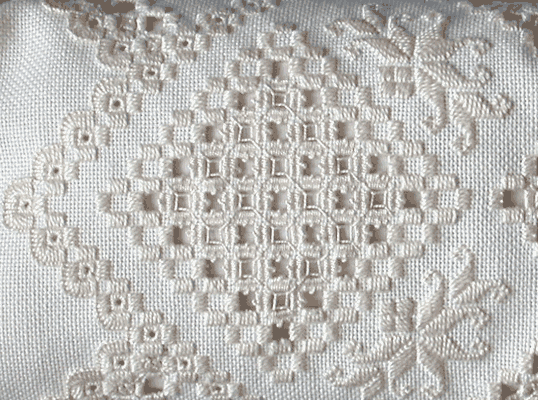In earlier times folk music was typically associated with primitive musical instruments. It was simple tunes played by country rustics on crudely constructed instrument, since provincial musicians could not afford anything sophisticated. However this was not true for some traditional music where musical craftsmen developed elaborate designs to ornament their native instruments. The beautifully decorated string instrument that this young man holds is not a violin but an instrument from Norway called the Hardingfeleor Hardanger fiddle.
.jpg) |
| Hardanger Fiddle Source: Wikimedia |
The Hardanger fiddle shares the basic shape of a classical violin but adds 4 or 5 additional strings that are not touched by the bow or fingers. Instead these strings run under the fingerboard and resonate according to the tones made by the 4 main strings. This produces a characteristic ringing sound which adds a kind of amplified chorus effect to the music.
The pegbox of the Hardanger fiddle, besides being larger for the 8 or 9 strings, is also carved into a different shape from the usual spiral scroll found on violins. It is typically a representation of either a dragon or the Lion of Norway, the symbolic animal on the coat of arms of the Norwegian Royal Family.
The pegs and fingerboard are embellished with inlay of Nacre, also known as Mother of Pearl, and the body is covered with a stylized floral motif made in ink called rosing.
Though the patterns are derived from Scandinavian folk art, the artistry in the luthier's craftsmanship puts this string instrument at a level of refinement that I think has no equal and gives it one of the most beautiful ornamental design of any musical instrument.
< >
Norwegian dogs are good too.
These two young men have posed in an unknown photographer's studio in some unknown location with an unknown black dog. The small photo has no marks for any identification of date but I would speculate it is circa 1900-1910. Were they brothers? Maybe. But surely they were from Norway.
The sound of the Hardanger fiddle is not exactly like a violin. Fortunately YouTube provides us with an excellent demonstration of its wonderful tone along with a closeup of the instrument. The artist is is Sindre Vatnehol playing a dance tune called a Rull or twirl originally performed by the celebrated fiddler Severin Kjerland from Voss, Norway.
* * *
* * *
This second small photo shows another musician with a Hardanger fiddle and his pose shows off the decorated instrument for best effect. In the first photo it is partly hidden, but both fiddles have a pair of tasseled ribbons tied to the lion's head. This decorative device may have been required when the Hardanger fiddle was used to lead a wedding procession.
This musician may date from around the same time as the two men in the first photo. But he is definitely Norwegian as the back of the photo has an imprint for the photographer, Hilda Julin of Gjøvik, Norway which is about 80 miles north of Oslo. While female photographers are not uncommon, it adds a special quality to the photo for me as I have not previously had one in my collection.
This second video on YouTube gives another view of the Hardingfele with some very fine playing from a musician who evidently has a new instrument. His Hardanger fiddle has 9 strings. The extra sympathetic strings can be tuned to several arrangements of pitches to suit different song and dance melodies.
* * *
* * *
The great Norwegian composer Edvard Grieg (1843 - 1907) wrote many beloved compositions that used the folk tunes of Norway. The opening phrase of the prelude Morgenstemning in his incidental music for Ibsen's Peer Gynt is derived from one kind of tuning for the sympathetic strings of the Hardanger fiddle.
This last video comes from the Norsk Folkemuseum in Oslo. Though the Hardanger fiddle is not easily seen, it accompanies a couple dancing a Hallingdans. {On closer inspection the musician may only have an ordinary violin, but the dance tune is still appropriate.}
Norwegian wood. Isn't it good?
* * *
* * *
UPDATE:
Here are two examples of Hardangersøm or Hardanger embroidery which was a traditional Norwegian pattern work on white thread material. My thanks to Liz Needles and boundforoz for recognizing this connection to the decorative design on the Hardanger Fiddle.
Isn't it good, Norwegian embroidery?
This is my contribution to Sepia Saturday
click the link and you might get a bird's eye view of Norway.
click the link and you might get a bird's eye view of Norway.







